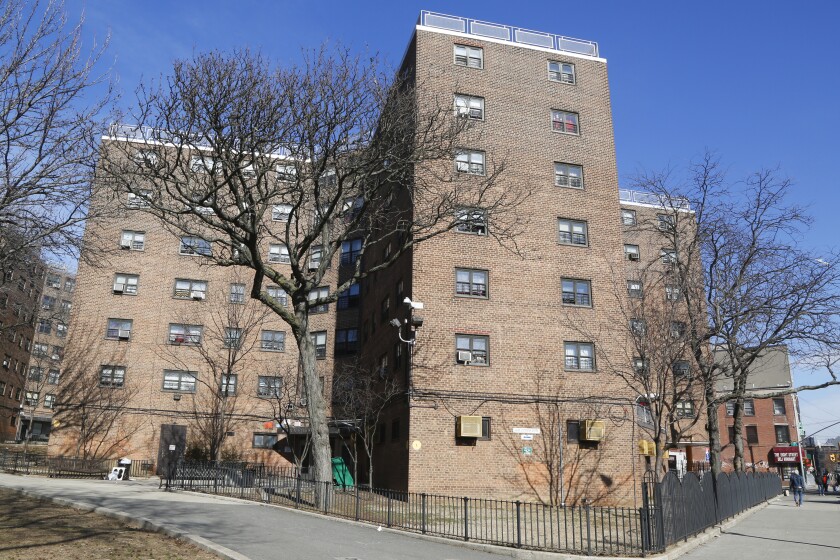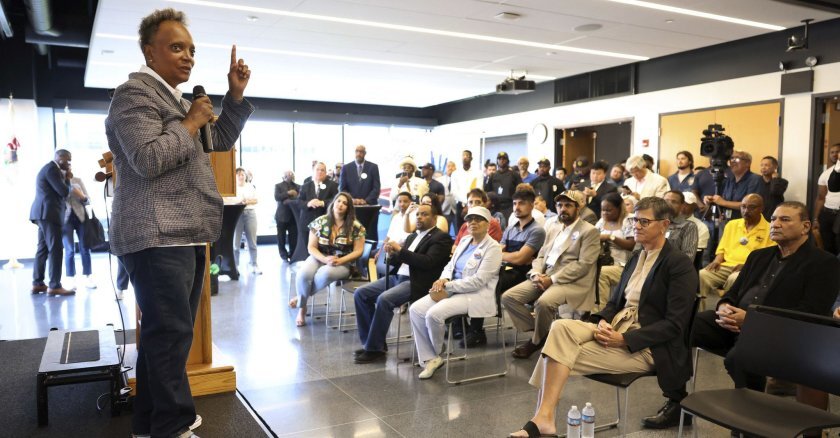A variety of opinions were expressed, but I was surprised when an African American woman voiced a complaint that I will paraphrase: Stop trying to put public housing in rich white neighborhoods. We need investment in the places where we live.
Sylvester Turner was not at the breakfast, but when he became Houston’s mayor a few years later he reflected the views of the woman who had spoken up. When the Houston Housing Authority proposed to spend more than $50 million on a 233-unit public housing project in the affluent, overwhelmingly white community of Fountain View, he blocked its approval by the City Council.
In Turner’s opinion, that money shouldn’t be spent moving poor people around the city. It should be spent in their home territories, all of which badly need help. The Obama administration didn’t agree. It charged that Turner’s decision to block the Fountain View development put the city in violation of the 1964 Civil Rights Act, which prohibits recipients of federal funding from discriminating on the basis of race.
The dispute was eventually resolved. The Department of Housing and Urban Development promised to pay more attention to Turner’s concerns, and the mayor relaxed his opposition. But the whole dispute was a microcosm of the decades-old dispute in urban America about how to fight concentrated poverty: subsidize development in the distressed neighborhoods, or move poor people out of those places and integrate them into more stable and successful areas of the city. That dispute is still very much with us. Now, just in the past few months, fresh research and a provocative new book have added momentum to the discussion.
For the past half-century, the preference of most local elected officials around the country has been similar to Turner’s: a place-based strategy aimed at boosting the schools, amenities and infrastructure of the poorest communities. It has had more failures than successes. Still, it has been the engine behind the most ambitious federal anti-poverty schemes of the past 30 years: the original “enterprise zone” idea of the 1980s, the “empowerment zone” program enacted by the Clinton administration in the 1990s and the “opportunity zones” created by Congress and supported by the Trump administration in 2017.
But many academics have looked at the results of these place-based efforts and called for a different approach: breaking up enclaves of concentrated poverty through a strategy of citywide dispersal. Their arguments have been buttressed in the last few years by the work of the prominent Harvard economist Raj Chetty, who has devoted much of his career to the issue.
THE IDEA OF ENTERPRISE ZONES grew out of a British proposal and was taken up in this country by conservative Republicans, most notably Rep. Jack Kemp of New York. It was essentially an effort to attract business to poor neighborhoods by substantially limiting taxes on firms that located there. Kemp didn’t get his version enacted at the federal level, although quite a few states tried it, but in the 1990s the Clinton administration pushed through something similar, rechristened as "empowerment zones" and featuring block grants and hiring subsidies to chosen communities, as well as tax breaks.
Empowerment zones were not a success. Thorough studies in 2002 and 2014 concluded that they had done very little to improve the lives of the urban underclass. The studies found that empowerment neighborhoods mainly attracted businesses that would have located there anyway, and mostly represented a reshuffling of existing investment rather than a stimulus. The most extensive study, published in 2014 by Michael J. Rich and Robert P. Stoker, reported that “none of the local EZ programs fundamentally transformed distressed urban neighborhoods.”
But the idea of place-based anti-poverty efforts did not disappear. It re-emerged in 2017 with a bipartisan congressional effort led by Democratic Sen. Cory Booker of New Jersey and Republican Sen. Tim Scott of South Carolina, and was accepted by President Donald Trump. This time called “opportunity zones,” it became the largest federal community development program in the United States. A total of 8,764 census tracts were eligible for more than $8 billion in subsidies, most prominently abatements in capital gains taxes. The communities chosen constituted 11 percent of all U.S. census tracts and had 31 million residents.
The interim reports on opportunity zones have not been much more enthusiastic than the ones on empowerment zones. “The literature on the effects of the OZ program are … mixed,” the liberal-leaning think tank Resources for the Future found earlier this year, “but mostly show little or no economic benefit for low-income communities and their residents.” The largest benefits were flowing to investors and existing owners of eligible properties.
Also this year, the right-leaning American Enterprise Institute found “no robust evidence of increased business activity nor consumer spending” in opportunity zones, only “modest stimulation of multifamily housing in certain years.” Another study, this one from the Urban Institute, reported that 5 percent of the zones were attracting 78 percent of the federal money, and that 86 percent of it was being invested in real estate, finance, insurance and holding companies.
REFLECTING SOME OF THIS PESSIMISM, the tilt in recent years among students of concentrated poverty has been away from place-based programs and in favor of moving poor people out of their neighborhoods and into more successful parts of their city. The Obama administration, although it tried out some place-based ideas, made dispersal a focus of its urban policy, using what leverage it had to force the location of new public housing in more affluent places. This is what got Sylvester Turner in trouble in Houston.
What’s the evidence for this approach? A lot of it is rather old. I’ve written about it before. One often-cited experiment, the Gautreaux initiative, took place in Chicago from the 1970s through the 1990s. Groups of ghetto residents were moved to different parts of the metro area, some to suburbs and some to more-modest city neighborhoods. The suburban group generally did better, but the results were questionable because there was no control group to reveal what would have happened to any of these people had they stayed in their original homes. A second Gautreaux experiment launched in 2002 was disappointing; many of the targeted participants opted not to move at all.
A later effort, Moving to Opportunity, gave vouchers to residents of poor neighborhoods in five cities to move to more affluent parts of their areas. After a decade, the results were modest. The voucher recipients reported improved health outcomes, but there was little improvement in earnings or years of education completed.
What’s indisputable is that both of these experiments were severely limited. The first Gautreaux project moved about 7,000 people. Moving to Opportunity relocated 4,600. Neither one tells us much about what it would mean to implement mass dispersal in a city the size of Houston, with more than half a million residents living below the federal poverty line.
NEVERTHELESS, THE DISPERSAL IDEA HAS GAINED NEW ADHERENTS. Chetty and his colleagues re-examined data from Moving to Opportunity and found that moving poor people to a more affluent area does improve their academic future and earnings potential — if they move at an early enough age (usually below 13). These children also live in better neighborhoods as adults and are less likely to become single parents. Chetty’s work was responsible in part for the Obama administration’s policy of requiring public housing to be placed in more diverse areas of a city.
Last year, in a different study, Chetty reported that low-income residents of a city benefit dramatically from contacts with new neighbors who have greater social connectedness, usually in more affluent areas. Moving to a highly connected place early in childhood, the argument goes, makes a difference to long-term upward mobility. In a way, Chetty’s work is a combination of place-building and dispersal-minded advocacy.
Now the Johns Hopkins University social scientist Seth D. Kaplan has pressed the case for place-based strategies in compelling form in a new book called Fragile Neighborhoods, insisting that improving neighborhoods may be our only feasible option. “If home is the place where we plant roots,” Kaplan writes, “our neighborhood is the soil we must nurture in order for those roots to grow. … Place actually matters far more than we realize, even in this moment of placeless possibility.”
Kaplan offers a list of practical ideas for making progress: Schools should nurture their own leadership talent; churches should focus on relationship-building; boys need more attention than girls. But mostly his book is an argument that while neighborhood strategies often fail, we can’t afford to stop trying them. He makes sense.
At this point, I can’t help paraphrasing Winston Churchill: Using neighborhoods to attack poverty may be the worst idea — except for every other idea we can think of.














